Mint is a hardy perennial creeping herb commonly found on kitchen window sills and herb gardens. Despite being a hardy herb, this square-stemmed plant is not without its issues. If like me, you notice your mint leaves are smaller than they should be, you’re going to want to know why and have to fix the problem. Read on to find out.
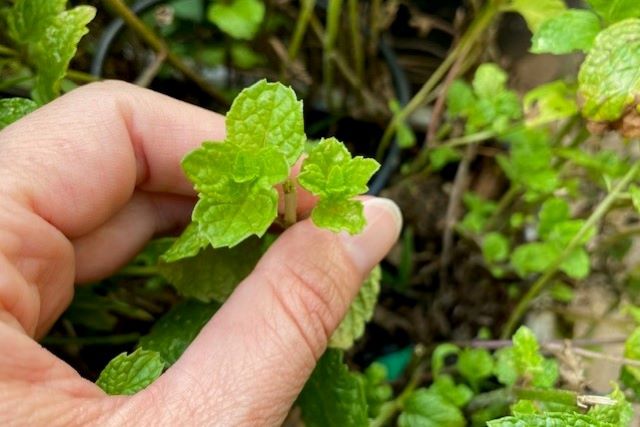
Table of Contents
Why Are My Mint Leaves So Small?
This hardy aromatic herb is fast growing, and can quickly take over your entire garden if left unchecked. You may assume your mint plant or Mentha, is happy in its chosen spot in the garden, as it happily propagates all over the patch. But, one thing you may notice, is that your mint plant has small leaves. Small leaves are the first sign that your mint plant is unhappy.
Small mint leaves can be caused by a lack of sunlight, insufficient soil nutrients, restricted roots, lack of pruning, and weather and soil conditions.
Small mint leaves can be a frustrating problem, but there are a few possible causes and solutions. Let’s find out more about each one.
Lack of Sunlight
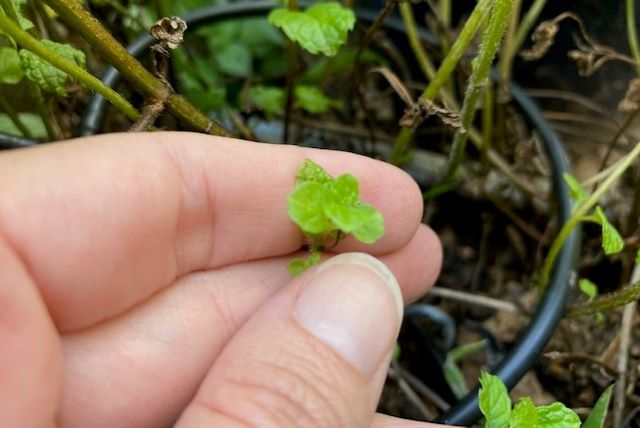
If you have recently noticed that your once full-leafed mint plants are looking a bit on the small side, with seemingly extra long stems? A lack of sunlight could be your problem.
If a mint plant is not getting enough sunlight, the plant will stretch its stems in an attempt to find the light. Your plant will only produce a few small leaves because all of its energy is going into elongating the stems.
Mint plants require at least six hours of direct sunlight per day to thrive, if they do not get that they will start looking for the sun. Luckily this is an easy fix; simply move your mint plants to a sunnier location in your garden.
Insufficient Soil Nutrients
If you know your plant is getting enough sunlight, yet you have tall-stemmed, small-leafed mint plants, the issue could be a lack of sufficient nutrients. Mint plants require a specific balance of nutrients to thrive. If your mint plant is not receiving enough nutrients from the soil, it will produce small leaves.
To fix this problem you can feed your mint plants with fertilizer. Be careful you do not add too much fertilizer to the soil (follow the instructions on the bag.) Too much nitrogen will cause your mint plants to produce large leaves and stems, but the leaves will have little flavor. The leaves will eventually begin to yellow, and the plant could die.
I prefer an all-purpose, slow-release fertilizer on mint plants that is not too heavy on nitrogen like this organic herb fertilizer here.
Another way to ensure your mint is getting enough nutrients is to mix good quality aged compost into the soil around your plants.
Restricted Roots
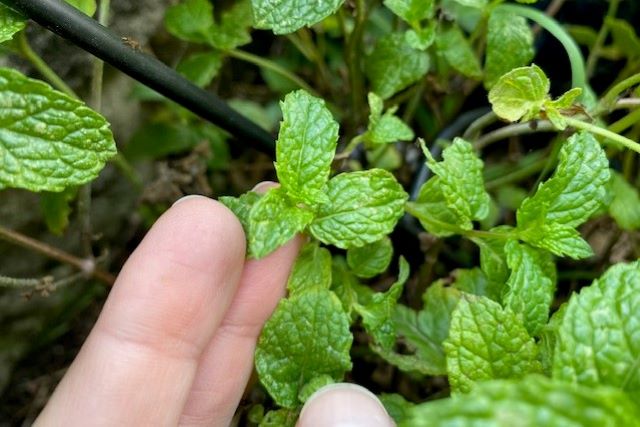
One of the most common reasons why your mint plant is producing small leaves has to do with the roots of the creeping herb. The mint plants’ roots are invasive as they spread quickly in the right conditions. Because of this, they need plenty of space to grow.
Mint roots will infiltrate the entire herb garden, which is a problem if you have other plants in the space. The mint will not produce large tasty leaves because it is fighting with other plants for space and nutrients.
When the mint roots have spread as far as they can in the space provided and start producing small leaves it is known as root-bound. This can happen to mints planted in the garden and in pots.
If you have planted your mint with other plants and are getting small leaves, there is nothing to be done except clear the mint from the area.
It’s a good idea to plant mint in pots or containers. You can even sit them a little underneath the ground to help them blend into your herb garden. The container keeps the roots from wreaking havoc in your garden and helps your mint to grow. You need to use a deep container so that the roots have enough space.
But also be aware that the mint can still escape its pot or container if it’s too close to the soil, so just keep an eye on it. I have my mint in a pot on my patio but it still escapes and has grown in any available soil in the patio cracks!
Lack of Pruning
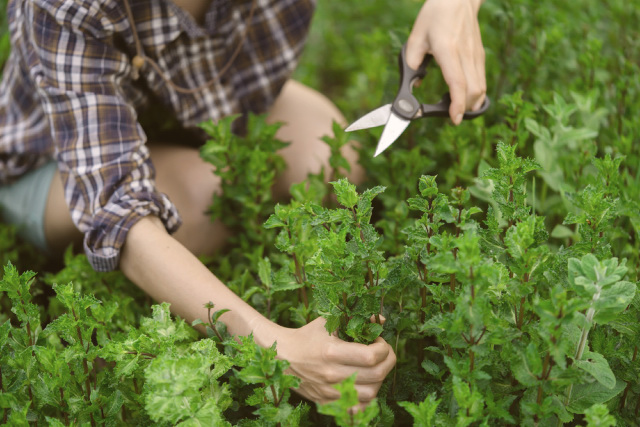
I once fell into the trap many home gardeners have fallen into, I planted mint directly in the garden and left it to do its own thing. This was a mistake. Firstly, my mint plant took over almost my entire garden, secondly, it produced very small leaves. As it turns out, you can’t just leave mint, it needs some TLC.
When you cut or trim a mint plant’s leaves it encourages new, larger leaves to grow. Pruning will also make your mint leaves grow bushy.
To prune your mint plant, always cut above a node (where the leaves emerge from the stem). It is best to prune your mint plant once a year when the mint has died back a bit. Prune your plant until it sits just 3 inches above the soil.
It’s advisable to cut the buds of the mint flowers off because once they bloom the mint plant will produce smaller leaves. But I usually just let my mint plant flower because I know it’s just part of its life cycle.
Weather and Soil Conditions
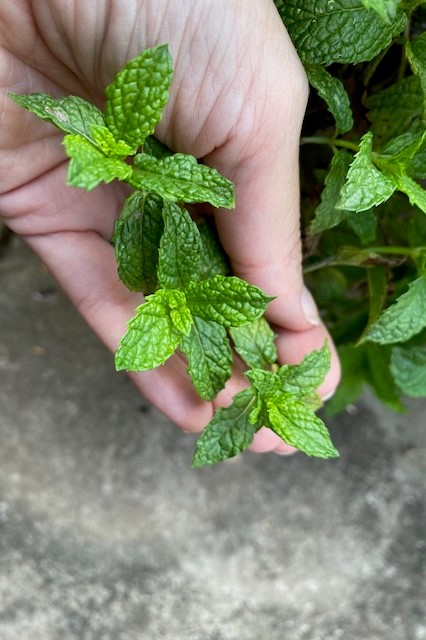
Despite its reputation and classification as a hardy plant in U.S Zones 4 to 9, mint requires a delicately balanced set of weather and soil conditions to thrive. If mint is over or under-watered it will produce small leaves. Similarly, if the weather is too cold your mint plant will have smaller leaves or die back until the conditions are right again. Additionally, if the solid pH levels are off, the plant will produce small leaves.
Mint thrives in warmer climates, and in moist soil that is well-drained. It’s important to water your mint weekly (around 1-2 inches should suffice), or when the top inch of soil is dry. To keep your soil loose and well-drained, you can add compost to the soil around your plants, working it in about 3 inches deep.
If your mint leaves are small and you suspect it could be the pH levels of your soil, it’s best to purchase a home soil testing kit and check. Mint prefers a pH ranging between 6.0 and 7.0.
If your soil pH level is below the optimum level, don’t panic, it is easy to fix. You can increase the pH level in your soil by adding a lime-based compound, crushed eggshells, baking soda, or wood ashes to the soil. And if it’s too high, add in aged manure or compost.
Further Reading:
